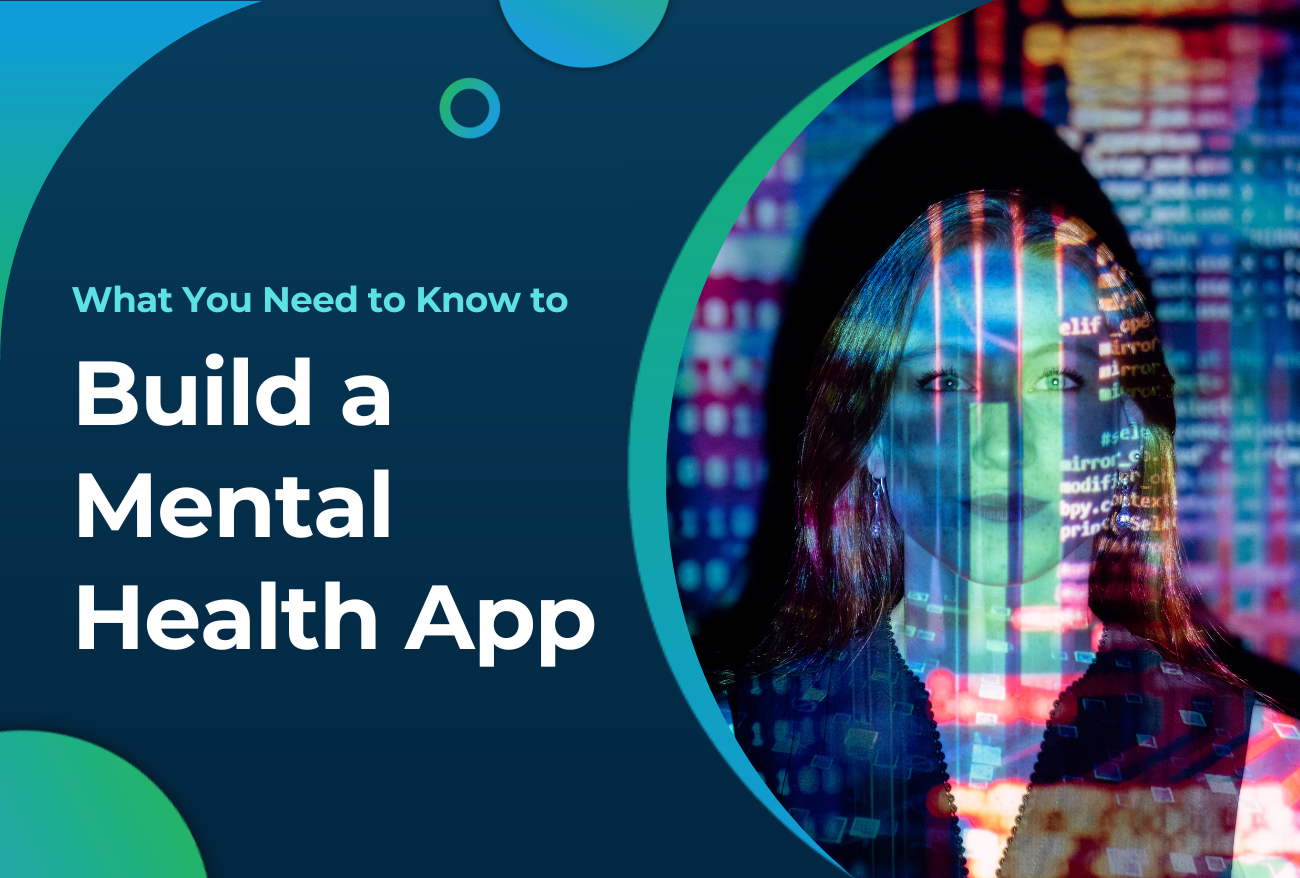October is World Mental Health Awareness month. It’s a great time to shine a light on how the tech community has stepped up and helped create dozens of useful mental health apps. One of the great benefits of this development is it has helped lift the perception of mental health as a serious illness, into its acceptance as a vital aspect of overall health. Plus, this kind of telehealth is popular for being less expensive, available 24/7, and provides the user with anonymity.
We take a look at the types of functionality the most popular mental health apps employ to help users, and programming languages and tech stacks you need to build one yourself.
Mental health apps and how they help
There are generally three categories of mental health apps – the first of which is used to support people with mental health disorders. These apps use proven treatment methods such as cognitive behaviour therapy (CBT), to help those suffering from a specific illness, such as ADD, eating disorders, drug addiction, obsessive-compulsive behaviours, etc. Some examples of apps that follow this route are Recovery Record for eating disorder support, and UCSF PRIME for people with schizophrenia.
The second category is mindfulness and mood mental health apps, or mental self-improvement apps. These tend to focus on de-stressing, mood management and overcoming negative thoughts. Leading the pack in this field is Headspace, which has reportedly been downloaded by more than 30 million users worldwide.
Lastly, there are multi-purpose mental health apps. A prime example is TalkSpace, which connects patients to licensed therapists and mental health professionals. It helps users via different types of therapy support, such as individual therapy, couple sessions, and psychiatry.
Planning your mental health app
The kind of mental health app you are going to develop will guide how complex and feature-rich your app will be. As a starting point, these are elements to keep in mind.
Registration and patient profile
Registration should be seamless and can be via social media or by entering personal details. From here the user will move on to create their profile. To deliver a personalised experience you’ll have to capture, at a minimum, their age, gender, interests, issues, occupation, and demographic info.
Content and design
Content elements such as tutorials, animations, video and audio integrations, and text-based information will enrich your app’s content. For design, use soothing colours with lots of white space and remove any content that does not directly support user tasks.
Monitoring
Monitoring is essential for both doctors and patients and can be done via passive or interactive monitoring. Tools can help with tracking symptoms, moods, and behaviour. Users who self-monitor are more likely to stay motivated and engaged.
Notifications and reminders
A calendar can schedule and trigger notifications for appointments, sessions, events, milestones, and keeps users motivated and on course. Users can be reminded to do daily check-ins, journalling and to schedule breaks.
Dashboards
Mental healthcare professionals need a dashboard where they can manage patients and from where they can directly respond to them via audio, video, messaging, or live chats. Dashboards for users must clearly show their progress towards their goals and put relevant content at their fingertips.
Other things to consider
- Decide on your monetisation strategy – paid, freemium, ads, or in-app purchases.
- Conduct comprehensive functionality and usability testing and employ machine learning algorithms to analyse user behaviour and add features that will enhance user experience.
- Ensure you follow the Health Professions Council of SA’s telemedicine rules, as well as relevant POPI guidelines to guarantee appropriate data protection standards.
Tech stacks you’ll need to develop a mental health app
Generally speaking, a mental health app developer will use programming languages like PHP, Python, or Node.js in the back end, and JavaScript, React.js, or Angular for the front end. React Native is a popular cross-platform solution for building apps for both iOS and Android as it is faster and uses a single coding language.
For databases, PostgreSQL and MongoDb are popular choices. AWS hosting is preferred for its scalable cloud computing capabilities and support. For a more indepth look, here’s a list of technologies and programming languages commonly used for building mental health apps:
- Hosting: GoogleCloud, AWS, Microsoft Azure
- Databases: PostgreSQL, MongoDb, MySQL
- Services: LoadNija (testing), Jitsi (streaming), MySQL (database)
- Backend: Django (Python), Laravel (PHP), Node.js, Spring Java
- Web front-end: React.JS, Vue.js, Angular
- Mobile app front-end: Flutter, React Native
3rd party integrations:
- Payment gateway: PayPal, Braintree, Stripe
- Geolocation: Google Maps, Core Location API
- Calendar: Google Calendar, Zoho, Nylas
- Social sign-ups: SAML, OpenID
- Chats: Sendbird, Stream, Vonage
- Messaging: Amazon S3 Bucket
- Video sessions: Now, Twilio, Agora
- Push notifications: OneSignal, Firebase Cloud Messaging, Push.io
- AI integration: Microsoft Bot Framework, Dialogflow, PyTorch, RASA
_____________
Inspired to learn to code and create your own mental health app? Then get started with the most important tech stacks and programming languages that will give you all the tools you need.
Our Software Engineer and Data Science Bootcamps are the perfect place for coding beginners to start learning the programming language Python. Then, to master Node.js, JavaScript, React.js, and MongoDB, we recommend you sign up for the Full Stack Web Developer Bootcamp.
Apply now and start your journey to becoming a developer.


